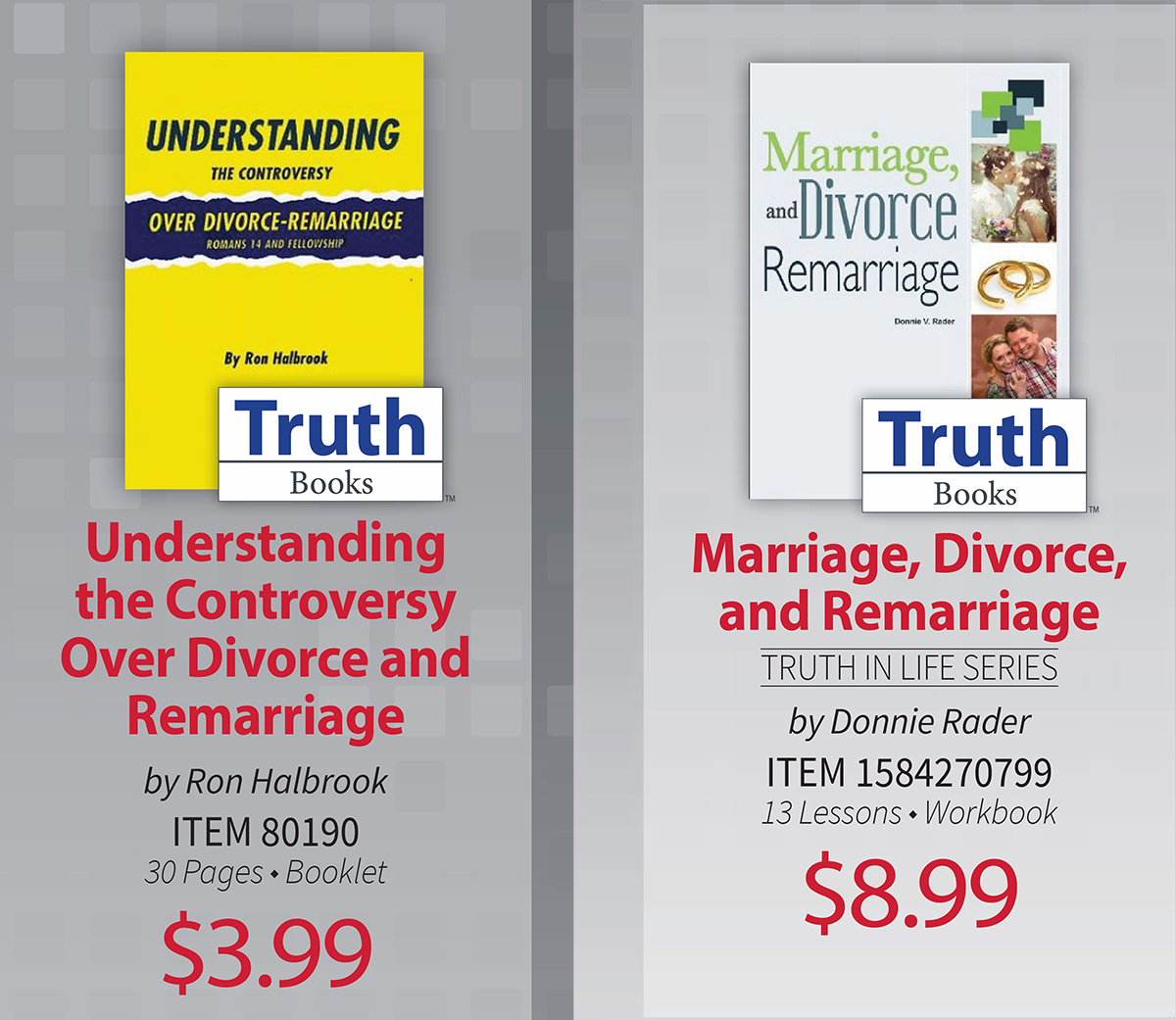

by Kyle Pope
Synopsis: When asked about divorce, Jesus reaffirmed God's original intent on marriage, as expressed in Genesis 2:24. In stating, "The two shall become one flesh," early Christians recognized in His teaching an explicit prohibition of polygamy.
In the book of Genesis, when the Lord created woman from the rib He that had taken from Adam, He issued an important proclamation that described the union He intended for the man and woman, and defined the nature of the marriage covenant. He declared, "Therefore a man shall leave his father and mother and be joined to his wife, and they shall become one flesh" (Gen. 2:24, NKJV). When Jesus answered a question posed by the Pharisees about divorce, Matthew and Mark both record His appeal to this text in His answer. He said, "'For this reason, a man shall leave his father and mother and be joined to his wife, and the two shall become one flesh'; so then they are no longer two, but one flesh" (Mark 10:6-8; cf. Matt. 19:6). In His quote, we should note a significant difference between the words of Jesus and the wording in most of our English translations of Genesis—instead of putting it, "they shall become one flesh," Jesus said, "the two shall become one flesh." Why is this wording different, and what is the significance of this difference?
We should note that this form of the quote is found in both Matthew and Mark (Matt. 19:6; Mark 10:7). Source critics have tried to argue that Matthew borrowed from the wording of Mark, and try to explain the common terminology in this way, but I reject that conclusion. Why? First, because the overwhelming majority of early church writers claimed that Matthew was written first (see Irenaeus, Against Heresies 3.1.1-4; Origen, Commentary on Matthew 1.1; Eusebius, Ecclesiastical History 5.8.1-4; Augustine, Harmony of the Gospels 1.2.4). Second, because the strong Jewish focus demonstrated in Matthew makes it unlikely that Matthew would have quoted a form so dramatically different from the Hebrew text if Jesus's words were, in fact, different from Hebrew texts in circulation when the gospel was written.
The gospels are not the only Scriptures that put this "the two shall become one flesh." In his letter to the church in Ephesus, the apostle Paul devoted the last half of chapter five to a comparison of the church and the husband-wife relationship (Eph. 5:22-33). In verse 31, he quotes Genesis 2:24, but also puts it "the two shall become one flesh." Are Jesus and Paul paraphrasing the original wording? Probably not. There is good reason to conclude that this is precisely how the Hebrew text read in the first century.
Why would we say this? First, because that is exactly how it reads in the Samaritan Pentateuch. The Samaritan Pentateuch is the text of the first five books of the Bible that has been used for centuries by the Samaritans. It is believed to be very ancient in its textual tradition, and in a number of places reflects readings found in the Dead Sea Scrolls but differing slightly from the Hebrew Masoretic text (the standard form of the Hebrew text used by Jews). Most English translations are based on the Masoretic text. Second, that is exactly how it reads in the Greek translation of the Old Testament made before the time of Jesus known as the Septuagint. In some cases, New Testament writers quote from the Septuagint or offer Greek translations of the Hebrew text that are superior to it. Third, the ancient Aramaic paraphrase used among Jews known as the Jerusalem (or Pseudo-Jonathan) Targum puts this "both of them shall be one flesh." Why would New Testament texts and all three of these ancient sources read "two" (or "both") if the original Hebrew text read "they" instead?
The Hebrew Masoretic text, as it has come down to us, represents a remarkable scribal tradition that vigorously sought to preserve the integrity of the original Hebrew text. Unfortunately, however, it was copied and produced by Jewish scribes who had rejected faith in Jesus and His teachings. When faced with questions about possible variants in wording, there is evidence that this anti-Christian bias may have influenced their choices in some texts. The earliest Masoretic manuscript that we have dates to the tenth century AD. While the discovery of Hebrew biblical manuscripts among the Dead Sea Scrolls a thousand years older than this confirmed the amazing accuracy of the Masoretic text, it also demonstrated some instances of bias. Could it be that Jews who continued to argue for polygamy preserved wording that read "they shall become" rather than "the two shall become" either deliberately or in an attempt to justify their behavior (or that of their ancestors)?
Although large portions of Genesis have been found among the Dead Sea Scrolls, unfortunately, the scrolls that would have contained Genesis 2:24 are damaged or missing that portion of the text. It is clear, however, that some within first-century Judaism were already rejecting polygamy. The Qumran text known as the Damascus Document described polygamists as being "caught twice in fornication" by having taken two wives in opposition to the "principle of creation," which it goes on to quote as taught in Genesis 1:27—"male and female He created them" (CD 4.20-21). Did they recognize this principle from manuscripts they possessed that read "the two shall become" rather than "they shall become"?
Early Christians recognized in Jesus's teaching a clear prohibition of polygamy and may reflect an awareness of this wording in the text of Genesis 2:24. Ignatius (ca. 35-ca. 108) wrote, "Let the husbands love their wives, remembering that, at the creation, one woman, and not many, was given to one man" (Epistle to the Antiochans 9). Tertullian (ca. 155-ca. 240) wrote an entire work entitled, On Monogamy, in which he argued against divorce and remarriage and polygamy. In his work entitled On Exhortation to Chastity, he wrote:
There were more ribs in Adam, and hands that knew no weariness in God; but not more wives in the eye of God. And accordingly the man of God, Adam, and the woman of God, Eve, discharging mutually (the duties of) one marriage, sanctioned for mankind a type by (the considerations of) the authoritative precedent of their origin and the primal will of God. Finally, "there shall be," said He, "two in one flesh," not three nor four. On any other hypothesis, there would no longer be "one flesh," nor "two (joined) into one flesh" (5).
In modern times, not only among Mormons, but even among some that have failed to recognize distinctions between the laws that governed the Patriarchs, Israel, and now, the gospel of Christ, there are those who have argued that polygamy is still acceptable before God. This is more than just a theoretical, hypothetical issue. For those who come to Christ out of a Muslim background, this is a real-world question. What does repentance demand? Could such a person stay in a polygamous relationship? While it is clear that God allowed polygamy under the Patriarchs and Moses, Jesus's teaching restores conditions God intended "from the beginning" (Matt. 19:8). His explicit declaration that marriage consists of "two" becoming "one flesh" must remove any question that lawful marriage under Christ could involve three, four, or anything beyond what the Lord first established in the creation of Adam and Eve. God created, and Jesus asserted, not many, but "the two shall become one flesh."
Author-Bio: Kyle preaches for the Olsen Park Church of Christ in Amarillo, TX. He has written several books published by Truth Publications including How We Got the Bible. The church website is olsenpark.com. He can be reached at kmpope@att.net.

